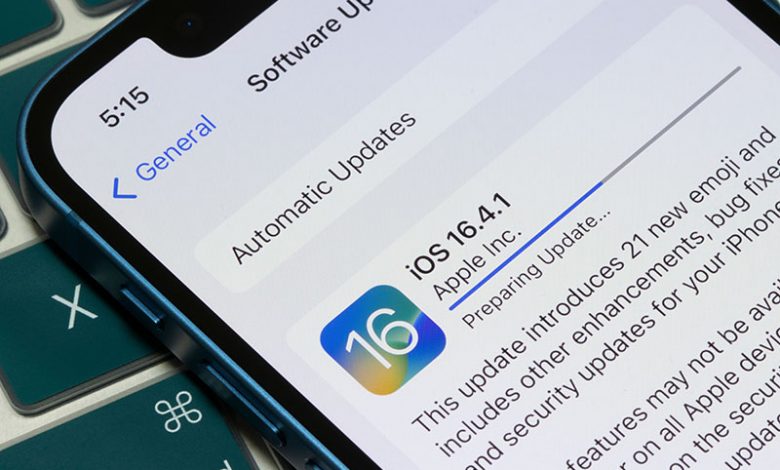
In presenting the concept of 'Mactans,' Billy Lau took the tech world by storm, shedding light on vulnerability in iOS devices. His research involved building a prototype charger capable of injecting malware into iOS gadgets.
As one of the developers behind the concept, Billy Lau introduced Mactans at a Black Hat cybersecurity conference. His presentation aimed to demonstrate the weaknesses in iOS security, utilizing Mactans as a proof of concept. The topic generated widespread attention and concern over the potential risks that unverified chargers might exacerbate in an otherwise highly secure Apple environment.
Table of Contents
Explaining the Mactans Concept
The concept of Mactans revolves around building a modified wall charger that can inject malicious software into iOS devices. The Mactans charger was developed with a tiny Linux computer uniquely designed to mimic a standard iPhone charger. Upon connecting an iOS device, it leveraged the privileges granted to it, injecting malware effortlessly without detecting any suspicious activity.
Agenda of the Presentation
The key agenda of Lau's presentation was to shed light on the potential risks relating to the use of unrecognized chargers while also highlighting inherent flaws in Apple's iOS security. It demonstrated how Mactans uses these vulnerabilities to inject malware into devices. The agenda further offered possible solutions and strategies to mitigate security risks.
Understanding Terms Commonly Used in iOS Security
Understanding terms commonly used in iOS security is crucial in comprehending the concept of Mactans. The term 'malware' refers to malicious software engineered to exploit or harm digital platforms. In the context of the Mactans charger, the malware aims to gain unauthorized access to the victim's iOS devices. Other critical terms in iOS security include 'iOS vulnerabilities,' which refer to flaws, weaknesses, or exposures in an iOS system that allow the malware to infiltrate.
Overview of iOS Security
iOS security is a complex structure that protects Apple devices from malicious threats and unauthorized access. Key aspects of this framework include the Apple App Store, the walled garden model, and the mandatory code signing process.
Role and Importance of the Apple App Store
The Apple App Store is central to iOS security. It serves as the exclusive source of applications for iOS devices, enabling Apple to regulate the software available to their users strictly. Vetted by a rigorous review process, Apple ensures all apps conform to their security standards, reducing the risk of malware threats.
Explanation of The Walled Garden Model
The walled garden model is a system in which Apple controls its devices' applications, features, and content. This model is known as 'walled' due to its closed ecosystem nature. The walled garden model provides a layer of security by limiting the installation of applications to those sourced exclusively from the authorized App Store.
The Mandatory Code Signing Process and its Enforcement
A significant feature of iOS security is the mandatory code-signing process. Each app on the App Store must have a digital sign with an Apple-issued certificate. This process ensures the authenticity of the application, i.e., it guarantees the developer has made the app it claims to be from and hasn't been tampered with since its creation. It also enables Apple to trace and remove any malicious apps from the devices they have been downloaded to if detected.
Potential Channel for Sideloading: iOS Developers
While the iOS environment is relatively secure, there are potential channels for sideloading, notably from iOS Developers. With the proper Apple Developer account, developers can bypass the App Store and directly install their applications onto iOS devices. While this ability is essential for app testing, it could permit the sideloading of malicious apps, highlighting a possible vulnerability in iOS security.
Process and Rules of App Publication
Getting an application onto the Apple App Store involves a comprehensive set of processes and rules outlined by Apple. Every stride is meticulously considered, from submission to review and approval to maintaining high security and quality standards.
Submitting Apps to Apple App Store
To offer an app to the Apple App Store, developers must enroll in the Apple Developer Program and use the App Store Connect platform. After the completion and testing of their application, developers upload the app for review, providing necessary information such as app description, category, keywords, and screenshots.
Review Process and Criteria for App Approval
The review process at Apple is a stringent one aimed at enhancing customer satisfaction and strengthening security. The process involves checking the app for technical issues, malware, and compliance with App Store guidelines. Criteria for app approval include compliance with rules regarding user privacy, in-app purchases, content accuracy, and adherence to Apple's design standards.
Rules and Guidelines for App Submission
Apple has set detailed rules and guidelines for app submission, which developers must comply with. These guidelines touch on various aspects, including user safety, performance, business, design, and legal. They also include stipulations around objectionable content, user-generated content, data collection and storage, and intellectual property.
Technicalities of The App Review Process
The technicalities of the review process are intricate, involving various automatic and manual checks. Initially, apps undergo an automated scan to detect significant issues. If an app clears this stage, it undergoes a manual inspection where human reviewers verify that it meets all the necessary guidelines set by Apple. This process ensures the app's functionality is as described, and its usage aligns with Apple's ethical and quality standards.
iOS Sandbox and Entitlement Check
In the broad landscape of iOS security, sandboxing, and entitlement checks emerge as vital components to ensure robust application isolation and control over system access.
Understanding Process Isolation and Filesystem Isolation
Process isolation is a part of the iOS security sandbox that ensures each app runs in its secure environment, ignorant of other apps' processes. This containment prevents a vulnerable or malicious app from affecting or accessing another app's data. On the other hand, Filesystem isolation ensures that each app has access only to its designated directory. That limits the app's access to system files and other apps' data, reducing the risk of data leakage or corruption.
Entitlement Checks by iOS during Runtime
Entitlements in iOS are privileges granted to apps that permit them to use certain features or access specific resources on the device. During runtime, iOS continually checks every executing process's entitlements, allowing only the actions the app is explicitly permitted to carry out. That keeps a tight rein on what each app can and can't do, reinforcing the safety of the device and its data.
Assessment of The Effectiveness of Apple’s Walled Garden Model
Despite potential channels for sideloading and other challenges, the effectiveness of Apple's walled garden model is widely popular. The stringent app review process, combined with the practices of sandboxing and runtime entitlement checks, creates numerous hurdles for potential threats. However, the emergence of hardware-based attacks like Mactans points towards the need for end-to-end security mechanisms, extending beyond the software realm to the physical security of the devices.




